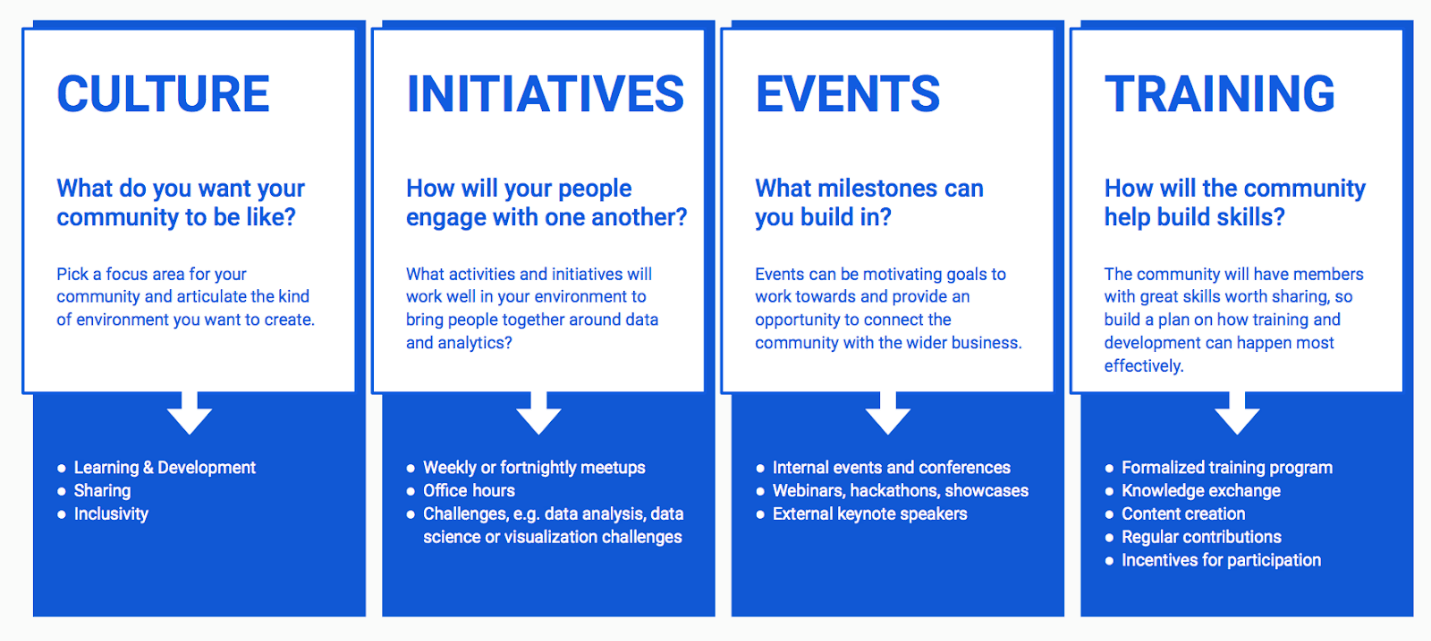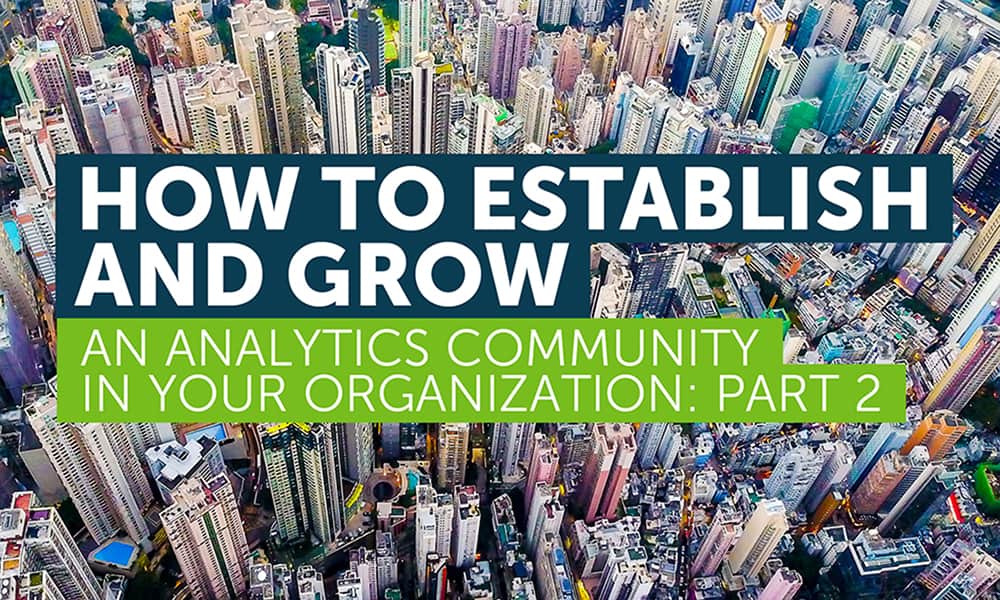Blog snapshot:
In this post I’ll guide you through:
- The different types of community you can set up
- A four pillar framework to establish your community
- Check out the first blog in this series to see the benefits and key attributes of a data and analytics community
When you’re ready to bring together your data engineers, analysts, data scientists and business experts in a community, it’s important to think about the type of community you want to build.
You can let this happen organically, but it’s best to align the community and its focus with that of the overall organization to ensure support and buy-in. What are the business needs when it comes to data and analytics? What are some of the gaps and missing links?
Starting with a blank slate gives you the opportunity to drive your efforts into the direction you choose. Here are three suggestions for the types of community you can set up.
1. Technically focused
In a technically focused community you start out with an emphasis on development and on building specific analytical and Loading...data science skills your organization and its departments need.
A project could be, for example, to implement new infrastructure solutions, bringing together people from different departments for the duration of the project and beyond.
They become involved in developing guidelines, best practices and processes that are implemented as part of the project and they continue to stay engaged once it is finished. Along the way you can address training requirements, have community members share their expertise with others and build skills internally.
2. Learning and development focused
Building a community with the main purpose of being a place for learning and development means that a key outcome will be increasing the skill level of its members and the rest of the organization. Deliverables for such a community include the creation of learning materials, such as video-based training, tutorials and guidelines. Additionally, members deliver knowledge sharing sessions, in-person training and may even create an internal formalized training program and platform.
While many of the data-related skills required by an organization are technical in nature, this community will also ensure that ‘soft skills’ are taught, particularly the topics of requirements analysis, stakeholder engagement and communication.
3. Collaboration focused
A collaboration focused community brings people together without specific deliverables or outcomes in mind, but rather to connect them so they identify opportunities to collaborate and support each other. Using existing initiatives can be helpful to facilitate these networking efforts and pairing people up based on their skills, interests and jobs helps to encourage mentoring and teaching among peers.
People can bring their work tasks to this community and find colleagues who can help them with specific questions and challenges. The community provides the platform for these exchanges.
How to establish your analytics community
Once you have assessed what the most appropriate community would be for your organization, it is time to get started. I recommend addressing the following four pillars in your planning process:

Culture
What kind of environment do you want to create for your analytics community? This is where the focus discussed above is a helpful guide to give you the direction to head in. Any community should strive to be very open, inclusive and to encourage sharing: sharing ideas, tips and tricks, knowledge and insights.
Initiatives
What kind of ways do you have for bringing your people together? Will they meet in person, for example at a weekly, fortnightly or monthly meetup? Or are they geographically dispersed and connecting needs to happen via video conferencing and phone calls? And given these parameters, how do you want them to engage with one another?
One idea is to establish challenges that encourage people to grow their skills while solving specific business problems and questions. You may start with generic challenges and then apply the process and approach to business challenges that need to be addressed.
Events
It is helpful to have a few events throughout the year that provide milestones and highlights for your community. How big they are depends entirely on the size and reach of your community and the nature of your business. To engage with stakeholders internally, you can plan a showcase event where analysts, data engineers and data scientists can present different projects and ideas to their peers across the organization. This is an opportunity to show the contributions and importance of data and analytics to people who don’t yet use data in their day-to-day work.
Training
Training should happen all along but in my experience, it becomes more formalized once the other structures and processes are in place. When your community is up and running and members are contributing, your organization is probably ready to establish a formal training and development program specifically for data analytics, engineering and data science.
The development will take some time as a curriculum needs to be planned, content developed and training courses need to be scheduled and run, but in the long-term this investment of time will be very worthwhile for the organization and the people within it.
You now have a framework for establishing your community and can get started with your planning process. In my next article I will share three specific ideas for activities you can run in your community, things you can get started with right away.

